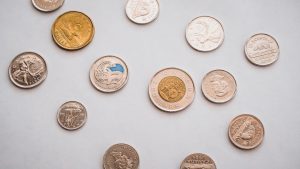Forex trading is a complex market that requires a lot of research, analysis, and trading strategies. With the advent of technology, traders can now use forex algorithms to automate their trading and make more informed decisions. Forex algorithms are sets of instructions that enable traders to automate their trades, analyze market data, and make better trading decisions. In this article, we will discuss how to create forex algorithms.
Step 1: Define Your Strategy
The first step in creating a forex algorithm is to define your trading strategy. This involves identifying the type of trades you want to make, the indicators you want to use, and the risk management strategies you want to put in place. Your strategy should be based on your trading style, goals, and risk tolerance.
Step 2: Choose a Programming Language
Once you have defined your strategy, you need to choose a programming language to write your algorithm. Some of the popular programming languages used in forex algorithm development include Python, C++, and Java. Python is the most popular language among traders due to its ease of use and powerful libraries.
Step 3: Data Collection
The next step is to collect data that will be used to train your algorithm. This includes historical price data, news articles, and economic data. You can get historical price data from various sources such as Yahoo Finance, Quandl, and Google Finance. Economic data can be obtained from government websites such as the Bureau of Labor Statistics or the Federal Reserve.
Step 4: Data Preprocessing
After collecting the data, the next step is to preprocess it. This involves cleaning and organizing the data to make it usable for your algorithm. You may need to remove missing values, convert data types, and normalize the data.
Step 5: Build Your Model
Once you have preprocessed your data, you can start building your model. The model is the heart of your algorithm and will be responsible for making trading decisions. You can use machine learning algorithms such as linear regression, decision trees, and neural networks to build your model. These algorithms learn from the historical data and make predictions about future market movements.
Step 6: Backtesting
After building your model, you need to test it using historical data. This is known as backtesting. Backtesting helps you to evaluate the performance of your algorithm and identify areas that need improvement. You can use platforms such as MetaTrader or TradingView to backtest your algorithm.
Step 7: Deploy Your Algorithm
After backtesting, you can deploy your algorithm to a live trading environment. This involves connecting your algorithm to a trading platform such as MetaTrader or Interactive Brokers. You should start with a small amount of capital and gradually increase it as you gain more confidence in your algorithm.
Step 8: Monitor and Optimize
The final step is to monitor your algorithm and optimize it as needed. You should regularly review your algorithm’s performance and make adjustments as necessary. This may involve tweaking your strategy, adjusting your risk management, or fine-tuning your model.
Conclusion
Creating a forex algorithm requires a lot of work, research, and testing. It is important to define your strategy, choose the right programming language, collect and preprocess data, build your model, backtest, deploy, and optimize your algorithm. With the right tools and knowledge, forex algorithms can help traders automate their trades, reduce risks, and make more informed trading decisions.





